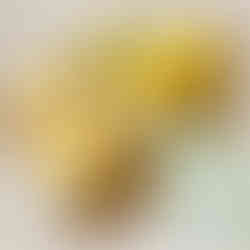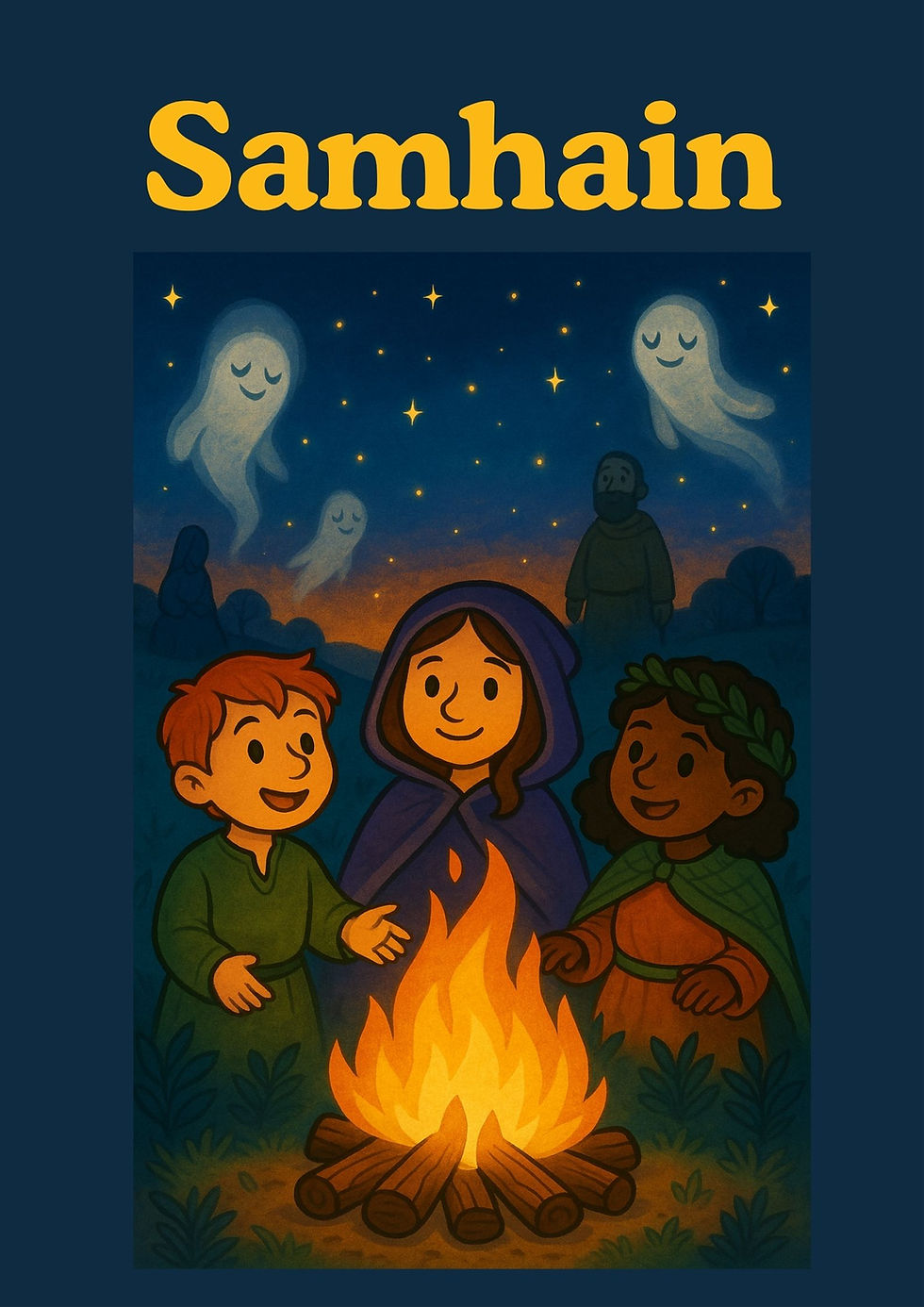Celebrating Litha with children
- Catkin & co

- Jun 20, 2023
- 6 min read
Litha - Midsummer/ Summer Solstice
'The Wheel of the Year' is an ancient Celtic calendar based on festivals that celebrated people's connection with nature - no religion or certain beliefs are needed to celebrate. Helping children connect with the rhythms of nature has many benefits and by celebrating festivals our ancestors marked, when peoples activities were more closely tied to nature, is an engaging way of doing this.

The Wheel of the Year calendar revolves around eight festivals - each signalling a shift in the natural world around us. This post is about how to celebrate Litha with children. Litha is also known as Midsummer or Summer Solstice (between 20th-23rd of June). The longest day of the year is 21st of June here in the UK. Litha is a time when fertile energy is at its peak, and new life is growing all around us. It celebrates the growing crops, the Sun, and abundance. The name Litha probably originals fro t he Saxons - Ærra Liða - translating as Before Litha (earlier June) and Æfterra Liða (After Litha) for the equivalent of our July. Modern pagans have taken the name Litha for the solstice because June is when the celestial event occurs.
The history of Litha/Summer Solstice
Like many festivals on the ‘wheel of the year’ there are various views and ideas of the origins of Litha. The celebration of Midsummer has been common in many countries and cultures throughout history.
Celts - had bonfires on hilltops where they sang and danced and celebrated Aine, goddess of love, summer and fertility. It is thought a custom was for lovers to hold hands and jump over bonfires to bring luck to their relationship. Some believed the higher the lovers jumped, the higher their crops would grow. It's said that the Celtic druids referred to the Summer Solstice as Alban Hefin, which means The Light of Summer. This was seen as a time of change and new beginnings. It was halfway through the growing season so Celts performed rituals to try to guarantee a good harvest.
Romans - celebrated Juno, wife of Jupiter, who was the goddess of women, childbirth and fertility.

Egyptians - it’s speculated that the position of the pyramids was so the solstice sun set between them. Similarly, at Stonehenge in the UK, the light falls on the certre stone on the summer solstice.
Early European cultures - lit bonfires and rolled burning wheels rolled downhill into rivers. The wheel may have represented the sun, and it probably symbolised the point at which the length of the day reached a turning point. After solstice, daylight begins to reduce as we start the downhill journey towards winter.
Neo Pagans - Oak King and the Holly King
Folklore tends to revolves around the Oak King and the Holly King. The Oak King and the Holly King are said to be the rulers of the Earth each in their own half of the year. From Yule to Litha, the Oak King rules. On Litha, the two battle for the crown and it is then that the Holly King triumphs and rules until Yule. Midsummer is marking the start of the change toward Autumn and winter - the days get shorter.
Litha activities to try with children
Have a bonfire
Simple activity, to have a bonfire together and talk about all the things you love about summer!
Watch the sunrise and sunset
Self explanatory! With small children you may want to pick one over the other rather than both! How about an early picnic breakfast to watch the sun come up?
Make Elderflower cordial
Anything made from elderflower is perfect for celebrating summer. You can make cordial and mix with water and drink, or perhaps use the cordial in elderflower and lemon drizzle buns/cake - one of our favours. Elderflower curd is also rather lovely and simple to make. Recipes can be found on our Instagram page (along with more elderflower tips and recipes). Check out our foraging cards too!
Photo on the right - black elder with pink flowers makes a lovely cordial too!
Make flower crowns
Flower crowns fit all occasions! You can weave a basic grown from materials like willow and dogwood, and decorate with seasonal flowers. However, we personally have a love of meadow grasses as they really symbolise summer to us, so our crowns will be decorated with lovely grasses. The grasses dry really well too, so the crown can become a summer wreath! Check out our free meadow grass identification sheet here.
Bake to celebrate Litha
You could bake and create to celebrate Litha. Just a few ideas include: -Anything with Elderflower -Honey Cake
Make a sundial
All you need is some pebbles and a stick (or piece of dowel). Add numbers 1-12 to the pebbles. Plant your stick in a sunny spot, check the time and place the right numbered stone where the stick casts its shadow. You do need to keep doing this for the next few hours, and again the next day BUT after that time, you have a sundial to check when ever outside in the garden/yard! Choose a sunny day to begin and start at noon. First, find a well-lit spot in your yard.
Make sun catchers
There are many ways to make sun-catchers, but one of our most simple ways is recycling plastic milk bottles. You can cut the bottle into pieces (squares/circles - what ever shape) and colour using felt tip pens. Carefully add a hole to hang and thread through wool/string and hang in the window!
Create sun-prints
Why not capture the suns rays and transform them into prints! You will need sun-print paper for this one. Choose items like a leaf, place on the paper and leave in the sun. After a while you remove the item and see the print left behind. It really is a fascinating activity for children and a way to marvel at the power of the sun.
Make herb pillows and herbal teas
Gathering herbs is a midsummer tradition, so perhaps go for a walk to see what you can find or visit a market. Herbs linked to this time of year include Chamomile, Lavender, Fennel, mint, rose, rosemary, sage, lemon balm, thyme and yarrow. We also love to collect the bracts and flowers of the Lime (Linden) tree and make tea. The flowers only bloom for about two weeks of the year, and tend to be round about now - therefore a Lime Tea feels extra special, capturing midsummer.

You can create your own teas using some herbs. Children should pick herbs based on which smells they like. To make the tea it can be as simple as adding the herbs to a cup, pouring over hot water, leaving to seep/infuse for a bit and then pour through a sieve into a cup. Honey can be added to sweeten the taste. With herbs and foraged foods, it’s important you test small amounts as people can react differently to things.
Or maybe make a herb bag to place under their pillow at night. Together you can sew a small bag, and let them fill with the herbs they like the smell of. It’s better to use dried herbs - if you don’t already have some - collect some and dry them out ready for later in the year.
Head off on a flower walk
Why did head off to your local park or similar to see what flowers you can spot. For little ones, looking for key colours is fun. As they get older, being able to identify some common wildflowers is lots of fun. Why not collect a few wildflowers and take them home to press? Check out our Wildflower ID Cards and Wildflower Kits (which include cards, a flower press and seeds - and currently on offer!)

Spot pollinators
Why not spend some time finding out about pollinators such as bees, moths and The trail teaches visitors about different pollinating insects like bees, butterflies, moths, and beetles and then see what you spot on a walk. Check out our Bee Identification cards and our Bee Kits.
Identify key trees
Trees like birch, oak, elder, laurel, and lime correspond with Litha. Particularly the oak, due to the tale of the oak king. Also as mentioned above, lime trees only blossom for a short time - which corresponds with midsummer, so this is a great time to appreciate their blossom. Why not spend time getting to recognise the trees we associate with Litha. Identify the trees using the leaves, bark and blossoms/fruits. A great activity is using Hapa Zome to make prints of the leaves and labelling the prints. Check out our Tree ID card collections.
Weave a Gods Eye to represent the sun
This is a great mindful activity and great for coordination.
Enjoy your Litha celebration...
We hope you enjoy the ideas here of ways to celebrate Litha with children. We'd love to hear things you get up to and/or hear your own ideas for how to celebrate. You can contact us via social media or at Catkinandco@gmail.com
Our Wheel of the Year Cards and activity booklet are in production, beautifully illustrated by Ellie Lewis Illustrator. If you can’t wait for the printed versions - then you can download the cards and wheel for just £2 here.























Comments